How to Fillet Fish
Recipes > How to Fillet Fish
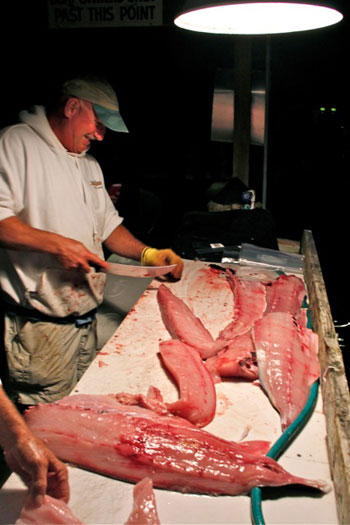 Fishing doesn't end when you hit the dock. Now it's time to clean your fish catch.
Fishing doesn't end when you hit the dock. Now it's time to clean your fish catch.
Regulations in most areas require you to return to the dock with the fish whole, so the necessary task of filleting your fish must be done on land either at your marina's fillet station or at home.
Equipment for Filleting Fish
Filleting is a dirty job but with the right equipment it can be done in no time.
Fillet Knife
Your fillet knife should be made of stainless steel of the highest quality you can afford. With proper care it can last a lifetime. Fillet knives have long, flexible blades that allow you to cut finely between the fillet meat and bones.
Cutting Surface
Ideally you will have a fillet table to cut up your fish. If you do not, a large cutting board with drip edge would be best. Polyethylene material is the best to use, it is easy on your knife and doesn't hold the fish smell. Look for UV resistant and marine grade for the longer life.
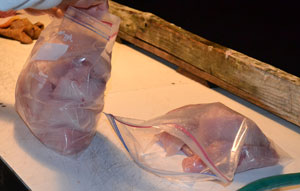 Other Supplies
Other Supplies
Water for washing off the fish as you work.
Gloves to protect your hands from getting punctured by fins or your knife.
Fish scale remover to remove scales before you start filleting.
Gallon size zipper bags to store the cleaned fillets.
Cooler with fresh ice to keep the fillets fresh until you get them in the refrigerator.
How to Fillet Fish
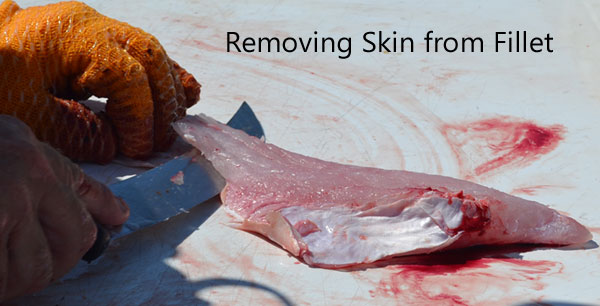
Filleting creates boneless, skinless meat. You fillet by removing the meat from the sides of the fish so there are no bones. Any fish can be filleted, but some are harder than others such as Sheepshead that have lots of bones. Very large fish are prepared by Steaking because they are impractical to fillet.
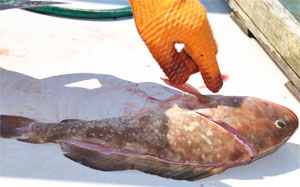 To Fillet a Fish:
To Fillet a Fish:
- Make initial cut behind the pectoral fin from backbone to stomach, avoiding puncturing the internal organs or severing the backbone.
- Cut along the backbone down the rib cage on one side of the fish
- Continue cutting down and over the rib cage until entire fillet is free from the fish
- With the skin down, insert knife between flesh and skin then cut at an angle using a sawing motion to free the fillet from the skin
- Store the first fillet in water then repeat the above steps to fillet the second side
Very skilled anglers will cut the fillet from one side of the fish leaving a small section near the tail still attached, then they will flip the fillet over and using the body for leverage, skin the fillet in one shot! Watch this video for this technique. This video shows the filleting of a snapper. It was taken in Texas but all fish are fillet the same.
How to Fillet a Flounder
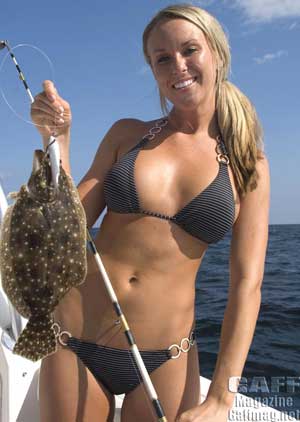
Courtesy of GaffLife.com
Flounders are a little different to fillet than most fish because they are flat fish.
Flounders have 4 fillets per fish, 2 each side.
The consensus is to fillet the bottom white side first because this side is more tender and by having the top side in tact you get more leverage.
Commercial fisherman cut the head off first then stick their knives into the body along the rib cage and spine on each side. They are skilled and fast and would not recommend this method for us mere mortals.
Steps
- Preparation: wash as much of the fish slime off as you can as this makes the flounder easier to handle.
- For larger flounder, scale the fish first, then rinse
- Make the gill cut down to the bones behind the gill
- Make the "T" cut down the lateral line from the gill cut to the tale
- Finishing the "T" cut down to the bones along the backbone
- Filleting bottom and side using the tip of the fillet knife, make long vertical strokes between the skin and ribs to release meat
- Filleting bottom and side the same as step 6
- Filleting top then repeat steps 3 to 6
- Skinning the Fillets With fillet still attached to fish, flip fillet over to skin side down, starting at the tail end lay you knife flat and run it between the skin and the fillet all the way to the end
Captain Jeff, Dark Thirty Charters, of Isles of Capri showed me how to fillet a flounder at the Pelican Bend Marina. Notice how he keeps the fillet attached to the body as he removes it. He said that it is easier to separate the fillet from the skin because you have more leverage holding the body as you glide your knife between the skin and the meat. Captain Jeff filleted the dark side first on this small flounder, probably because he is an "expert" with lots of practice.

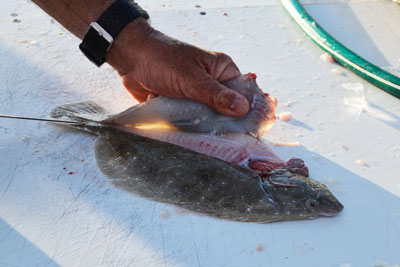

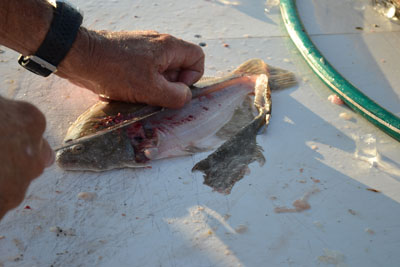
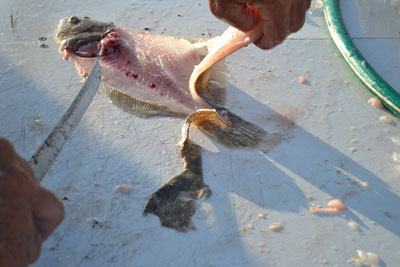

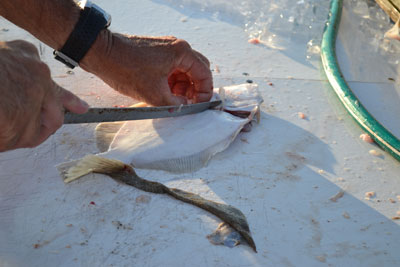
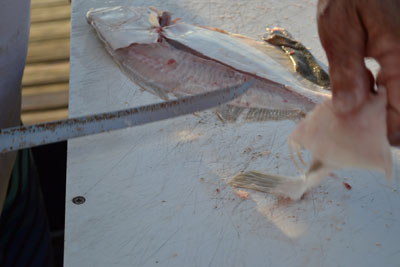
How to Fillet Permit
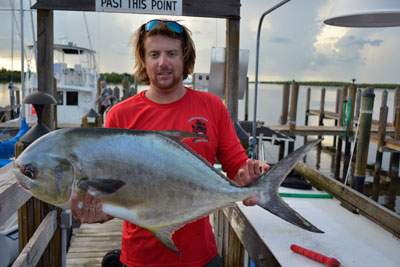
Permit fish caught by Steve Cooper offshore of Naples, Florida October 31, 2014.
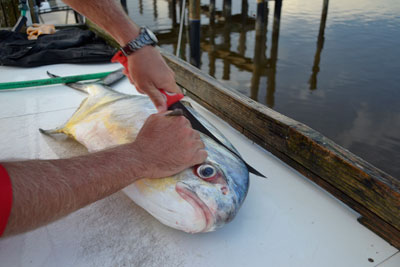
Start filleting your permit by cutting just behind the eyes.
.
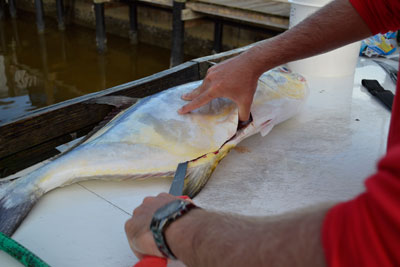
Continue slicing along the bottom using a sawing motion.
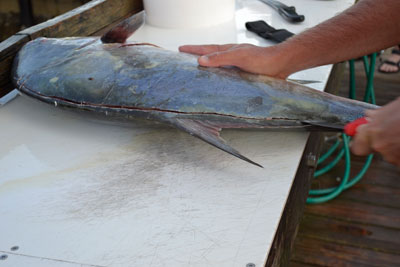
Go back to starting cut and slice down the back.
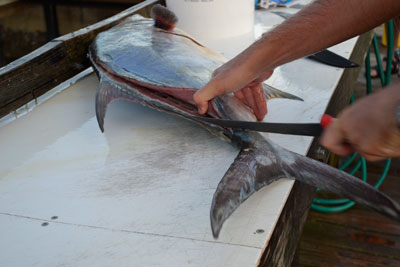
Pulling the fillet up, finish the cut at the base of tail.
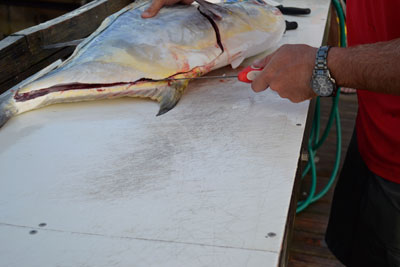
Go back around the cut line and gently saw the meat from bones.
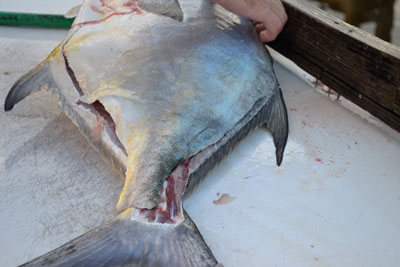
View of cut line from tail to head.
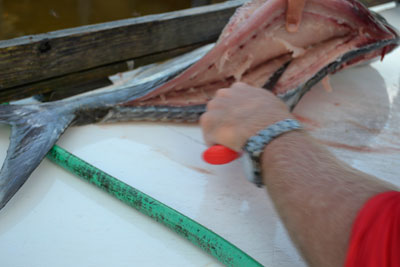
Lifting the fillet, slowly glide your fillet knife along the breast bones to release the fillet, working your way to the back..
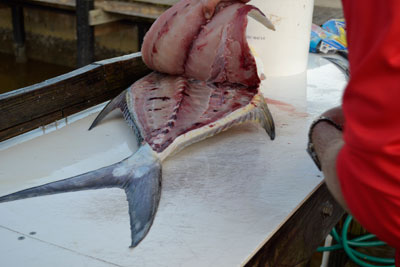
After going around 2nd time, you should now be able to pull the fillet up off the body.
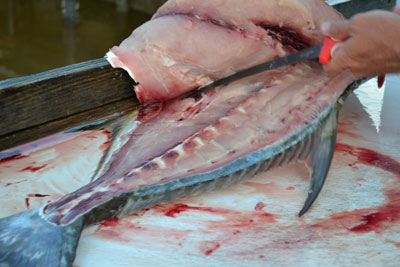
Now finish the cut near the head to release all the meat.
.
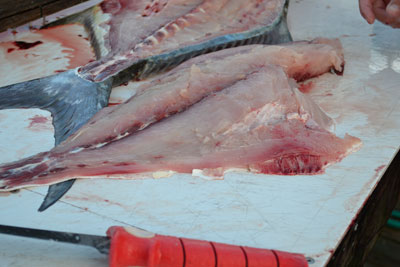
Two large fillets come off the body, two more to go!
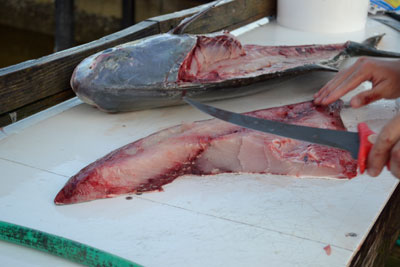
The rough end is trimmed off the end so you get a clean fillet.
.
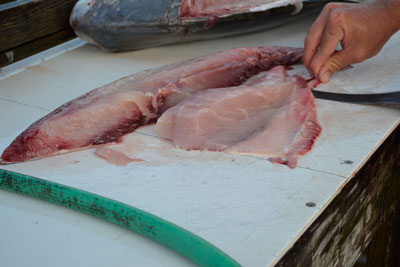
Firmly hold the fillet by the tail piece of skin and work your fillet knife between skin and flesh.
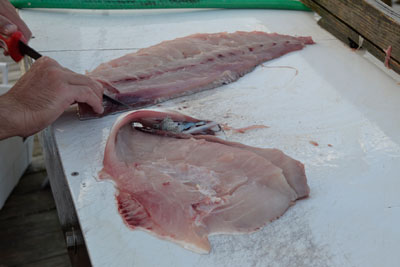
Slowly work the knife down the skin away from you releasing the flesh from the skin.
.
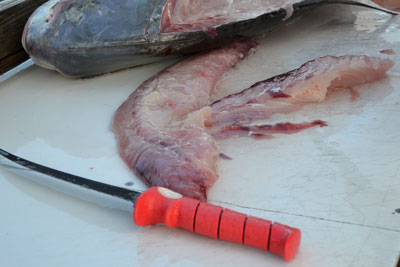
Each side of the permit fish will have 2 fillets, one large and one small.
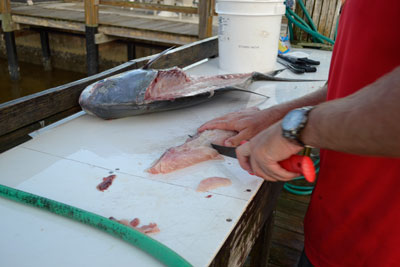
Cut the fillets into serving size pieces and place in zip lock bags on ice.
.
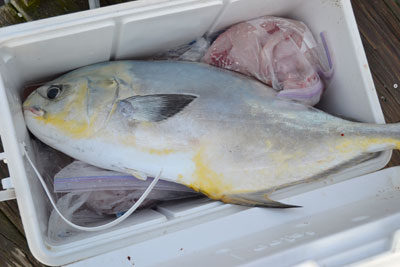
You get a lot of meat from the permit fish. Notice the cut up fillets in the zip bags on ice.
How to Fillet Other Fish
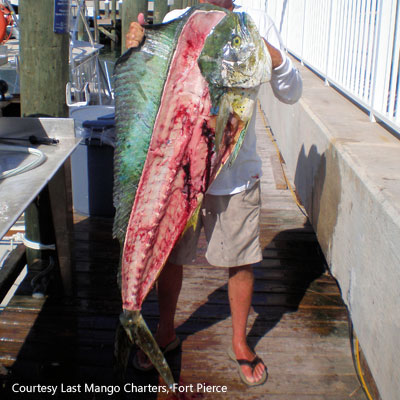
Bull Mahi Mahi Dolphin Fish have a lot of meat.
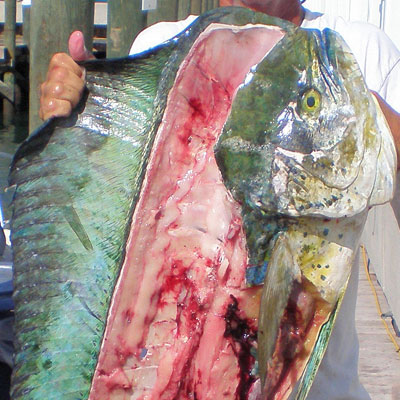
Notice how you cut behind the face all the way to the top of the skull.
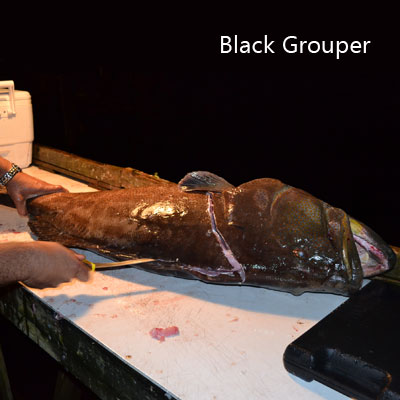
Grouper are filleted the same as permit as we showed you above. You start cutting just behind the skull.
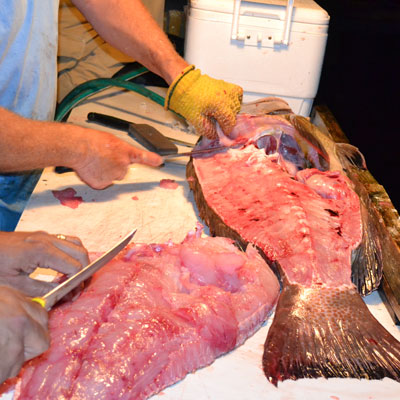
This large Black Grouper has huge fillets, this is only one side!
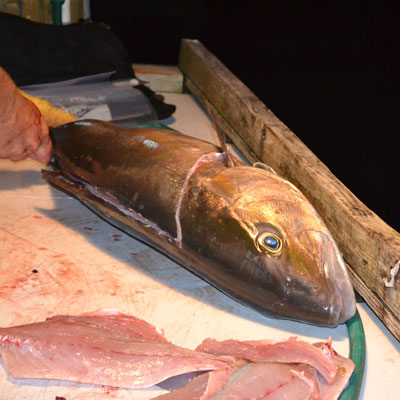
Large Amberjack fillet nicely and as with the other fish you start by slicking behind the head.
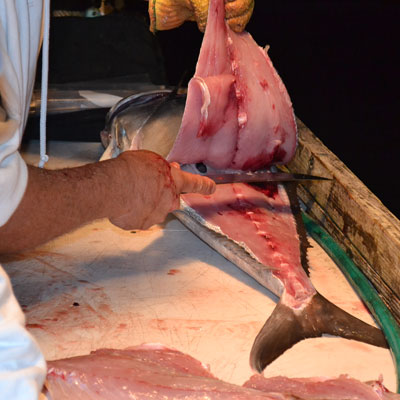
Slowly sawing along the spine to release the meat on one side. A long fillet knive works best on this large fish.
For more infomation on fish cleaning and storage visit our other page Keeping Your Catch.









